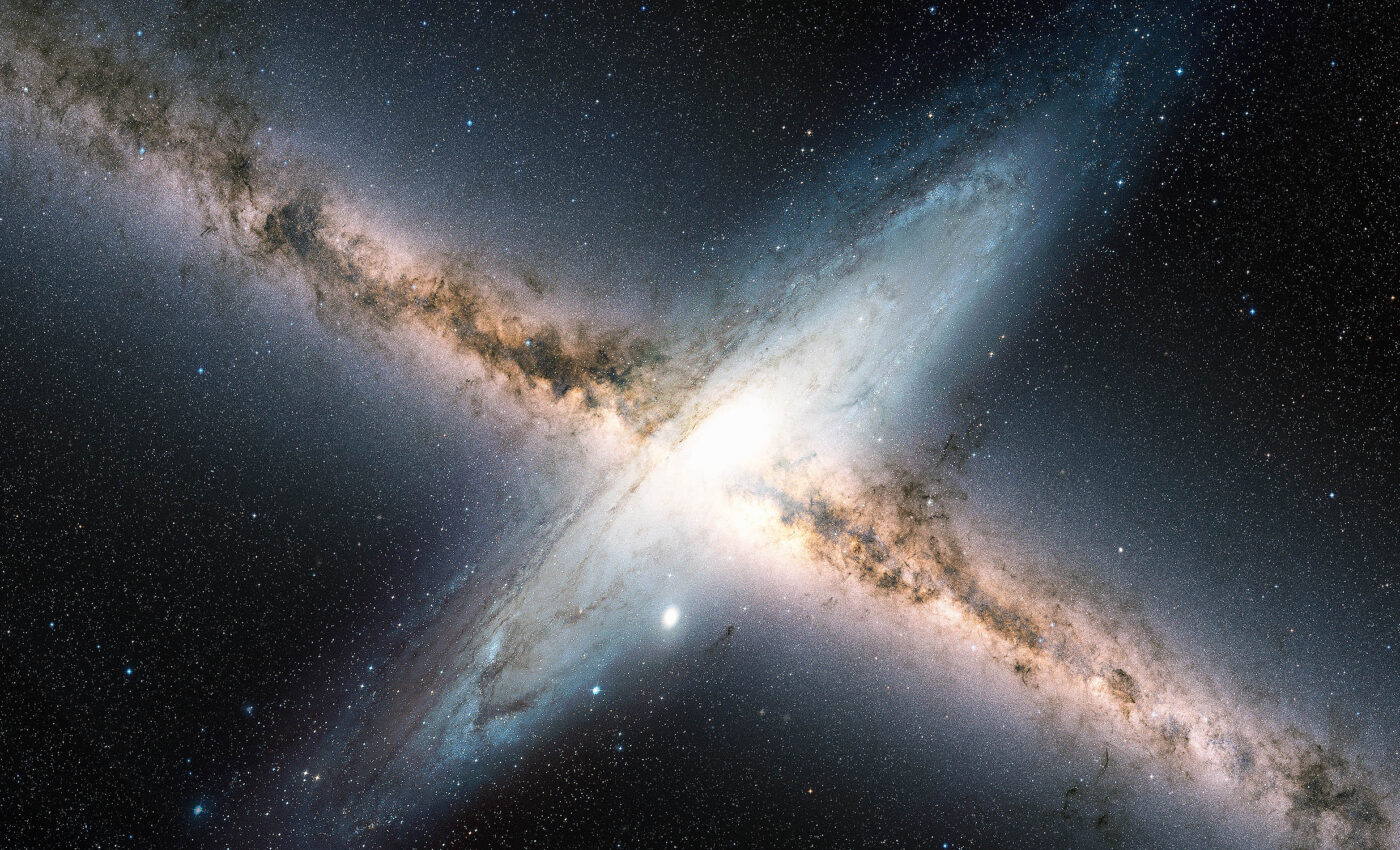
Milky Way galaxy is surrounded by massive magnetic fields
The mystery surrounding the origin and evolution of cosmic magnetic fields has long perplexed astronomers and astrophysicists alike.
This fundamental question has been at the forefront of astronomical research, driving the development of world-class radio telescopes such as the Square Kilometer Array (SKA).
Enigma of cosmic magnetic fields
Determining the large-scale magnetic field structures within the Milky Way has proven to be a formidable challenge for scientists worldwide.
In a study published in The Astrophysical Journal, Dr. XU Jun and Prof. HAN Jinlin from the National Astronomical Observatories of the Chinese Academy of Sciences (NAOC) have made a remarkable discovery.
Their research has revealed the presence of immense magnetic toroids within the halo of the Milky Way. These structures play a crucial role in the propagation of cosmic rays and provide essential constraints on the physical processes occurring in the interstellar medium, shedding light on the origin of cosmic magnetic fields.
Understanding “magnetic toroids”
In this study, the term “magnetic toroids” describes the structure of the magnetic fields found in the Milky Way’s halo.
These magnetic fields have a toroidal configuration, meaning that they form closed loops around the galaxy, with the field lines running in opposite directions above and below the galactic plane.
The discovery of these colossal magnetic toroids is significant because they play a crucial role in the propagation of cosmic rays and provide essential information about the physical processes occurring in the interstellar medium.
The presence of these magnetic structures also sheds light on the origin and evolution of cosmic magnetic fields, which has been a long-standing mystery in the field of astronomy and astrophysics.
Lifetime devotion to the Milky Way’s magnetic fields
Prof. HAN, a renowned expert in this research area, has been at the forefront of determining the magnetic field structures along the spiral arms of the Galactic disk.
Through a long-term project involving the measurement of pulsar polarization and Faraday effects, he has made significant contributions to our understanding of the Milky Way’s magnetic fields.
In 1997, Prof. HAN made a striking observation. He discovered an anti-symmetry in the Faraday effects of cosmic radio sources across the sky, relative to the coordinates of the Milky Way.
This finding indicated that the magnetic fields in the halo of our galaxy possess a toroidal field structure, with reversed magnetic field directions above and below the Galactic plane.
Determining toroid size and strength
Despite this discovery, determining the size and strength of these magnetic toroids has remained a daunting task for astronomers.
There was a suspicion that the observed anti-symmetry in the sky distribution of Faraday effects could be attributed solely to the interstellar medium in the vicinity of the Sun.
This hypothesis was supported by the fact that pulsars and nearby radio-emission objects exhibited Faraday effects consistent with the anti-symmetry pattern.
The key to resolving this uncertainty lay in determining whether the magnetic fields in the vast Galactic halo possessed a toroidal structure beyond the Sun’s immediate vicinity.
Innovative approach pays off
In this study, Prof. HAN proposed an innovative approach to tackle this challenge. He suggested that the Faraday rotation caused by the interstellar medium near the Sun could be quantified by measuring a substantial number of pulsars, some of which were recently obtained by the Five-hundred Aperture Spherical radio Telescope (FAST).
By subtracting this contribution from the measurements of background cosmic sources, the true nature of the Galactic halo’s magnetic fields could be revealed.
Dr. XU diligently collected all available Faraday rotation measurement data spanning the past three decades. Through meticulous data analysis, the scientists made a remarkable discovery.
They found that the anti-symmetry of Faraday rotation measurements caused by the Galactic halo’s medium extends across the entire sky, from the center to the anti-center of the Milky Way.
This finding implies that the toroidal magnetic fields exhibiting this odd symmetry are truly colossal in size, spanning a radius range from 6,000 to 50,000 light-years from the center of our galaxy.
New understanding of the Milky Way and magnetic fields
In summary, the study conducted by Dr. XU Jun and Prof. HAN Jinlin marks a significant milestone in our understanding of the Milky Way’s physics.
Their discovery of the immense magnetic toroids within the Galactic halo provides crucial insights into the propagation of cosmic rays and the physical processes occurring in the interstellar medium.
This research serves as a landmark in the ongoing quest to unravel the mysteries of cosmic magnetic fields. It opens new avenues for further exploration and promises to deepen our comprehension of the universe we inhabit.
As astronomers continue to probe the depths of space with increasingly sophisticated instruments, studies like this one remind us of the awe-inspiring complexity and grandeur of the cosmos.
The secrets of the Milky Way, once shrouded in mystery, are gradually being unveiled, thanks to the tireless efforts of dedicated scientists like these.
The full study was published in The Astrophysical Journal.
—–
Like what you read? Subscribe to our newsletter for engaging articles, exclusive content, and the latest updates.
Check us out on EarthSnap, a free app brought to you by Eric Ralls and Earth.com.
—–













